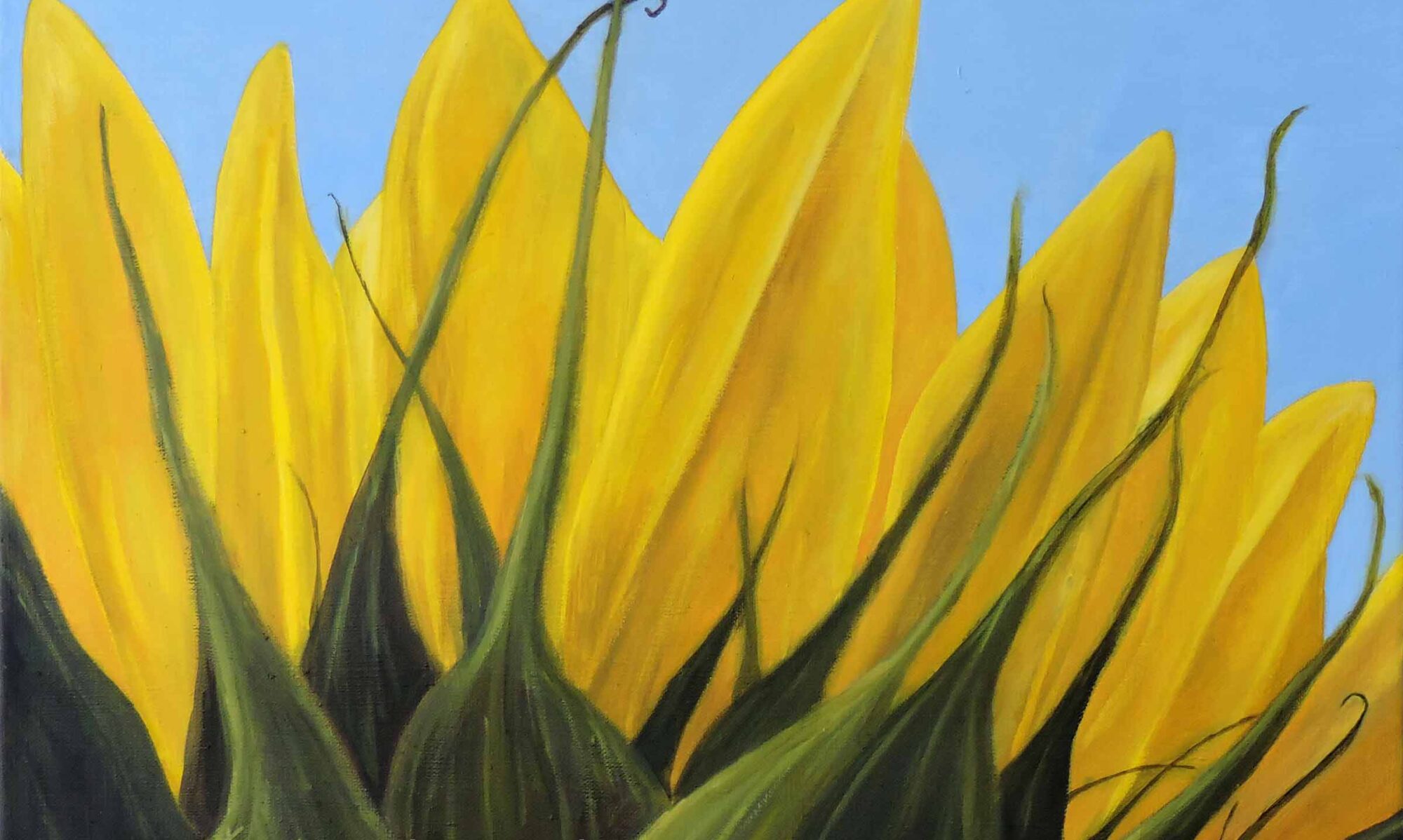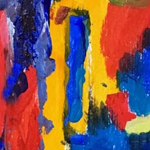
ICON | IVORY CARVING
Quick links to more art terms and definitions are located at the end of the list.
Icon
An artistic visual representation or symbol of anything considered holy and divine, such as God, saints, or deities. An icon could be a painting (including a relief painting), sculpture, or mosaic. It also refers to a little picture on a computer screen that represents the various functions of the computer. Generally, the user clicks on an icon to start an application or function.
Iconography
The branch of art history that involves the identification, description, and interpretation of the content of images. It encompasses the study of symbols, themes, and subject matter depicted in art, particularly focusing on their meaning and significance within a given cultural, historical, or religious context.
Through iconography, scholars analyze the visual elements of a work of art, deciphering the underlying messages, narratives, and ideologies conveyed by the artist. This field often involves comparing visual elements to literary sources, historical records, and other artworks to provide a deeper understanding of the cultural and symbolic references embedded in the artwork.
Iconography serves as a critical tool in understanding the evolution of visual language and the ways in which societies communicate ideas through imagery.
Illumination (in art)
Refers to the decoration of manuscripts with intricate designs, ornate letters, and miniature illustrations. This practice flourished particularly during the Middle Ages, where religious texts and important documents were often embellished with gold leaf, vivid colors, and detailed imagery to enhance their visual appeal and convey symbolic meaning.
Illuminated manuscripts are characterized by their use of precious materials, including gold and silver, which were applied to the pages to create a radiant effect, hence the term “illumination.” These works of art were typically created by scribes and artists working in monastic scriptoria, meticulously crafting each page by hand.
Illusionism
A technique in art that creates the illusion of a real object or scene, or a sculpture where the artist portrays figures in a realistic manner, tricking the eye into believing the objects are real and occupying the same space as the viewer. A concept also known as mimesis.
Illustrate
To create visual representations (drawings, paintings, or other imagery) for books, magazines, or other print or electronic media to clarify or explain the text or show what happens in a story.
Illustration
A visualization, such as a drawing, painting, photograph, or other work of art, stresses the subject more than form. The aim of an illustration is to elucidate or decorate a story, poem, or piece of textual information (such as a newspaper article) by providing a visual representation of something described in the text.
Illustration Board
A type of thick board made by fixing textured absorbent paper onto a rigid backing, such as cardboard or poster board. It’s sturdy, weighty, and designed for creating complete artworks. One surface of the board is meant for use, and it provides an excellent canvas for drawing and painting. Whether you’re using charcoal, watercolors, or other media, illustration board ensures your work stays flat and durable.
Illustrator
A graphic artist who specializes in enhancing the written text by providing a visual representation that corresponds to the content of the associated text. Also refers to a computer illustration program developed by Adobe Systems, Inc.
Impasto
A painting technique where paint is applied thickly to a canvas or panel so that brushstrokes or palette knife marks are visible. Originating in 14th-century Italy, it gained popularity during the Renaissance, when artists like Michelangelo began using impasto in their sculptures and paintings.
Implied Line
A line in an artwork that is subtlety perceived by the viewer but has no physical shape and flows from one area to the next, implying continuation by similar direction and juxtaposition.
Impressionism
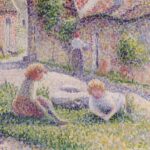
A free and spontaneous painting style that began in France around 1870. It appears rough and incomplete, marked by small, thin, and noticeable brushstrokes. Impressionist artists frequently painted en plein air to capture the natural light and color of the landscape. They seldom used black, opting instead for dark tones and complementary colors. Impressionism typically conveys the artist’s immediate impression, rather than an intricate depiction. Claude Monet and Camille Pissarro were pivotal figures in this art movement.
Imprimatura
(An Italian term meaning “first paint layer.”)
An initial stain of color applied to a canvas or painting surface before starting the actual artwork. It provides a transparent, toned ground, allowing light to reflect through the subsequent paint layers. Artists often create imprimaturas using earth pigments like raw sienna, diluted with turpentine. It’s especially useful in classical approaches where underpainting and drawing are established ahead of time.
Incising (in art)
Refers to the technique of cutting or engraving into a surface with a sharp tool to create a design, pattern, or decoration. This method is commonly used in various forms of art, including ceramics, printmaking, and sculpture.
India Ink
A simple black or colored ink, made from a black pigment consisting of lampblack and glue, used for drawing and outlining, especially when inking comic books and comic strips.
Indian River School
An American art movement of the 1950s and early 1960s. A group of artists collaborated to create dramatic and power-filled images portraying scenes in Florida. The group was heavily influence by a Florida naturalist named, A.E. “Beanie” Backus. The group created their artworks using materials like Masonite, Upson board, canvas board and canvas. Furthermore, rather than selling through art galleries, the artists sold their work directly to customers along highways.
Indigo
 A deep and rich color, positioned between blue and violet on the visible spectrum of light. Indigo is often described as a dark purplish-blue; it has a unique hue that can sometimes appear more blue or more purple depending on the light and context. Its origins trace back to the indigo dye derived from the Indigofera tinctoria plant, a substance historically prized for its use in textile and artistic applications.
A deep and rich color, positioned between blue and violet on the visible spectrum of light. Indigo is often described as a dark purplish-blue; it has a unique hue that can sometimes appear more blue or more purple depending on the light and context. Its origins trace back to the indigo dye derived from the Indigofera tinctoria plant, a substance historically prized for its use in textile and artistic applications.
Industrial Design
The design of the mass-produced products of our everyday environment, from sinks and furniture to computers. The word was first used in America in the 1920s to characterize the work of specialized designers who worked on product design.
Informal Balance
(Also known as Asymmetrical Balance.)
Refers to a type of balance that occurs when both halves of a composition maintain a sense of balance, but with different art elements on each side. In other words, both sides have “visual weight” that complements each other, creating an almost symmetrical effect. Unlike strict symmetry, informal balance feels more spontaneous and less organized, making it a versatile tool for artists.
Insect Art
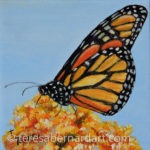
Refers to the illustration and depiction of insects in a detailed and accurate manner. It includes precise and realistic images of insects for research and education, as well as fine art that depicts their beauty and complexity. Artists make intriguing pieces based on the rich forms, colors, and features of numerous insects, such as butterfly wings and beetle armored exoskeletons. This special blend of science and creativity makes each insect a unique subject for artistic expression. Also called “entomological art.”
Installation Art
A genre of contemporary art that involves creating three-dimensional works designed to transform the perception of a space. Unlike traditional artworks that are typically confined to a canvas or pedestal, installation art encompasses entire environments, inviting viewers to engage and interact with the space in a multisensory experience.
This form of art often incorporates various materials, including found objects, natural elements, technology, and multimedia components such as sound and video. Installations can be site-specific, meaning they are created to exist in a particular location, enhancing or altering the viewer’s experience of that space.
Intaglio
A printmaking technique where lines forming an image are cut into a metal plate and filled with ink. Pressing a sheet of paper against the inked plate transfers the print of the image onto the paper.
Intensity (or Saturation) of Color
Refers to the purity or dullness of a color. A color’s purity depends on whether it has been mixed with another hue and, if so, to what extent. The most vibrant colors are those straight from the tube. Colors mixed with different hues are considered less intense. To reduce the intensity of a color, there are two options: 1) mix the color with gray or 2) mix the color with its complement.
Intermediate Colors
(Also known as “tertiary colors.”)
Refer to the colors between primary and secondary colors on the color wheel. They are created by mixing equal parts of one primary color and one secondary color. Intermediate colors allow greater flexibility beyond primary and secondary hues.
The Intermediate Colors are:
-
- Yellow-Green: A mix of yellow and green.
- Blue-Green: A blend of blue and green.
- Blue-Violet: Combining blue and violet.
- Red-Violet: A fusion of red and violet.
- Red-Orange: Mixing red and orange.
- Yellow-Orange: A delightful blend of yellow and orange.
Internal Focus
In the realm of art, refers to a creative approach where artists draw inspiration from their thoughts and feelings. These artists delve into their inner world, seeking to express intangible concepts, emotions, or ideas. Rather than strictly portraying external reality, they use physical objects as a means to convey what lies within them. Surrealism, post-impressionism, fauvism, cubism, and abstract expressionism are examples of art movements driven by internally focused artists. Also referred to as “internal vision.” Opposite of “external focus.”
International Association of Astronomical Artists (IAAA)
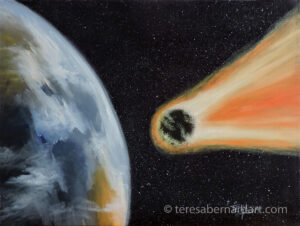
A global guild of artists that promotes astronomical and space art projects, using various mediums like painting, drawing, sculpting, blowing glass, and digital art to create space-themed images. For more on the IAAA, visit their website here.
Iridescence
(Also known as goniochromism.)
A color change phenomenon that occurs on certain surfaces like an oil slick, soap bubble, or fish scales, that appears to gradually change color as the angle of view changes. This lustrous rainbow-like effect is due to the differential refraction of light waves.
Irregular Curve
(Also known as French curve, drawing curve, or aircraft curve.)
Refers to a thin, clear, hard material (often made of plastic) shaped in a scroll or curved form. It is used as a guide by artists and designers past specific points that aren’t found along the curve of a perfect circle. Essentially, it acts as a flexible template that allows artists to create smooth, free-flowing curves that deviate from standard geometric shapes. Common uses of this tool are:
-
-
- Drawing: Artists use irregular curves to create organic, natural shapes—such as the graceful curves of leaves, waves, or cloud formations.
- Design and Drafting: Architects, fashion designers, and engineers use them to create complex, custom curves in their designs.
- Precision: Irregular curves help maintain consistency and accuracy when drawing or drafting by hand.
-
Isometric Perspective
A method of visually representing three-dimensional objects in two dimensions, where the three principal axes are equally foreshortened. Unlike traditional perspective, which uses vanishing points, isometric perspective keeps the scale consistent without distortion. It involves drawing objects with equal angles, typically 30 degrees to the horizontal, ensuring that the scale of an object remains the same regardless of depth.
Isotype
(An acronym for International System of Typographic Picture Education.)
A method of graphic design and data visualization that uses symbols and pictograms to represent data and information.
This system uses standardized symbols, which are often simple and easily recognizable, to convey statistical information and other forms of data without the need for extensive text. Isotype has been employed in various fields, including education, social sciences, and public information campaigns, helping to communicate information effectively across language barriers.
Ivory Carving
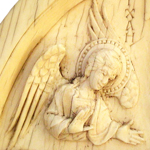
The carving or shaping of ivory into sculptures, ornaments, and decorative articles using animal tusks and teeth, notably from elephants, whales, and walruses, by using sharp cutting tools, either mechanically or manually.
You May Also Like
This art definitions and vocabulary resource is provided as a valuable resource for art enthusiasts. If you like the information here and find it helpful, please consider purchasing a painting. Your support helps to cover the cost of keeping this art definitions lexicon online. Simply click or tap the thumbnail link of any Teresa Bernard oil painting to view additional details.
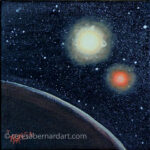
6″ w x 6″ h
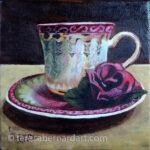
6″ w x 6″ h
Art Glossary Quick Links
Contributing to The Art Dictionary
The art definitions vocabulary dictionary is a work in progress. New terms and definitions are added on a regular basis. If you know of an art term and definition that isn’t already listed in it, but you believe it should be, send it to us and we’ll consider adding it. We’ll let you know if we do. Thanks!
Thanks for reading this!
